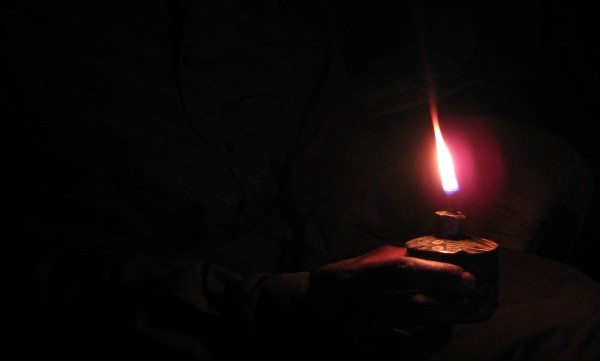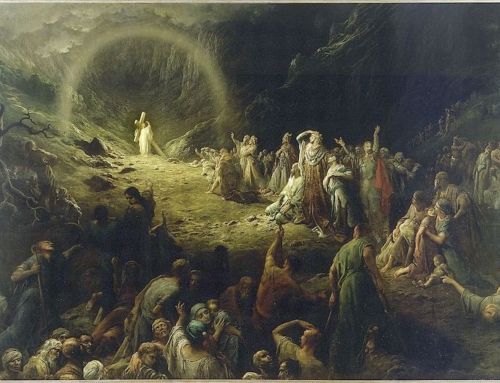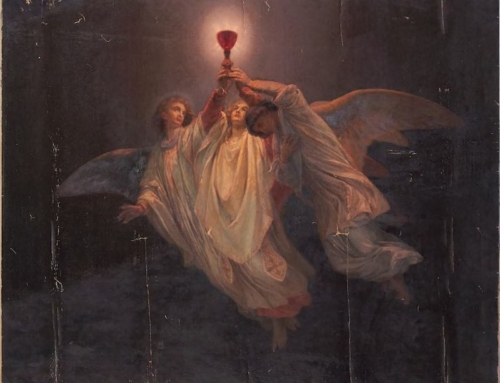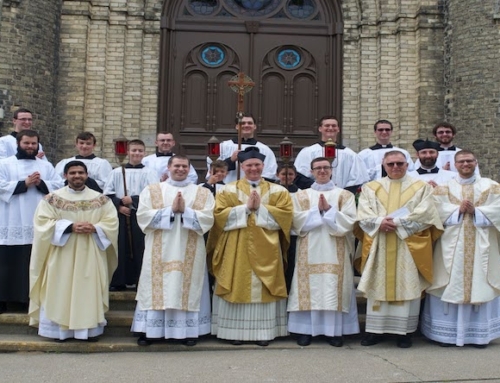We want our faith to make the world into a land of bright lights and rainbows, but we persist in a world of uncertainty and shadows, where anything could be lying in wait. The Christian life has its days and nights, “a time to weep, and a time to laugh; a time to mourn, and a time to dance” (Ecclesiastes 3:4). Even the good times are marred by the realization of their transience: “vanity of vanities; all is vanity” (Ecclesiastes 1:1). The night seems always to linger. But, for those of faith, it is never quite free from the brightness of day. It is not the case that the two merge into a kind of perpetual twilight. Rather, they remain side by side and yet distinct.
This is the subject of Bl. John Henry Newman’s well-loved poem “Lead Kindly Light”:
Lead, Kindly Light, amid the encircling gloom
Lead Thou me on!
The night is dark, and I am far from home—
Lead Thou me on!
Keep Thou my feet; I do not ask to see
The distant scene—one step enough for me.
Newman doesn’t ask that the Light dispel the darkness, only that it lead him through it. He doesn’t even want to see what is coming farther down the road. The Kindly Light is like a candle in a dark room, clearly seen by all who look toward it. Its light, though surrounded by darkness, is not overcome by it (cf. John 1:5). Because the darkness cannot overcome the light, it is always there for those who turn to it, but not so bright as to overwhelm those who look away: “the light has come into the world, and men loved darkness rather than light.… but he who does what is true comes to the light” (John 3:19, 21).
Newman confesses that he too was among those who rejected the Kindly Light, because it wasn’t the kind of illumination he was looking for:
I loved to choose and see my path, but now
Lead Thou me on!
I loved the garish day, and, spite of fears,
Pride ruled my will: remember not past years.
The prideful will loves the garish day because it promises control. What we want is to be able to order our lives according to our preferences, and to do this we need to see the distant scene. As a result, the garish light of a false god is more appealing than the light of Christ, by which “now we see through a glass, darkly; but then face to face” (1 Corinthians 13:12). We feel the need to know what we don’t need to know, and this leads us astray. The promise of control cannot but fail to live up to expectations. The path remains unseen despite our efforts, and the garish day serves only to exaggerate the darkness instead of alleviating it.
Having come to this conclusion, Newman is content with the lead of the Kindly Light as long as this life lasts, seeing by its light no more than one step at a time. Yet he holds out hope for a greater vision than this:
And with the morn those angel faces smile
Which I have loved long since, and lost awhile.
The dark night and encircling gloom are finally put to flight at the approach of the morn. The light of this morning is not like the garish light of pride, but the full revelation of Christ in the glory of His second coming. This is the light by which, as St. Paul assures us, we will see face to face and behold the smiling faces of the angels. The Kindly Light is a foretaste of this coming light, a dawn before the dawn, that shines “on those who dwell in darkness and the shadow of death” (Luke 1:79). It is for God to decide how long the night will last, and for us to patiently endure with the Light He gives us. He knows where to lead us, and how to bring us to the morn.
✠
Image: Lamp







